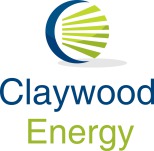
Renewable Energy Solutions
There is a lot to consider before and after installing a renewable system.Our useful guide will help to ensure you cover the all-important first steps for installation to enable you to get the most out of your system. We offer a consultation to advise on what systems and energy saving measures would be suitable for your property as well as offering a comprehensive service to include Project Management of the comlete project.
1. Finding a reputable installer
To be able to claim RHI Payments you must use an installer who is certified under the Microgeneration Certification Scheme (MCS) and uses MCS-certified products.
All installers or suppliers should be able to provide a detailed breakdown of the specification and costs of their proposed system.
They should also be able to:
- Explain how they have calculated the size of the system to be appropriate for your needs.
- Supply clear information and operating instructions.
- Explain how you should maintain your system.
- Provide an estimate of how much heat and electricity will be generated by any proposed system, and illustrate what this means in terms of your current energy needs.
- Provide an estimate of the savings you could make after installation.
2. Get a quote
We recommend you get at least three quotes from three different installers. Don’t compare installers on cost alone – the cheapest may not be the most appropriate. We can Project Manage the job from start to finish.
We will check quotations for details including:
- Will you need to arrange and pay for other trades such as electricians, plumbers or groundwork contractors?
- Do the prices cover the distribution system (radiators and associated pipework) and the safe removal and disposal of any existing equipment, for example your old boiler?
- Do prices cover the cost of commissioning the system? All accredited installers are certified to commission systems once fully installed to ensure that they are fit for purpose. Making sure that you receive a Commissioning Certificate from the installer.
- Available options e.g. size, fuel type, hot water storage, and maintenance cycles.
- The efficiency values of the system.
- Payment options - your deposit should not be more than 25 per cent of the full cost. Check that this will be protected with insurance and guidance to any funding or grants available.
- For heating systems, ask whether the cost of integration with your home’s heating system, or a proposed heating system if required, is included.
3. Check planning permission and building warrants
Depending on the kind of property and installation, you may also need to get planning permission or a building warrant from your local planning authority, making sure you have the right permissions in place before beginning any installation works.
You should always check with your local planning department to find out if planning permission or building warrants are required. If your home is a listed building you will almost certainly require consent from your local authority.
For more information on planning permission and relevant building regulations use the following link:
Planning Portal - for England and Wales
4. Check your insurance policy
Check with your home insurance provider to make sure your policy covers the changes to your home, and make any adjustments you need. Some policies cover the more common systems such as solar PV.
5. Get financial support
Check the Energy Savings Trust there are many schemes offering financial support and incentives for installing renewables. You may have to apply for funding before proceeding with the installation so it’s worth checking beforehand.
What should I do after my system has been installed?
6. Check your MCS certificate
Once the renewables system has been commissioned you should receive an MCS installation certificate from your installer. MCS requirements state that your MCS installer should have registered your system within ten working days of the system being fully installed. Householders must use an MCS certified installer and product for most funding schemes.
7. Organise a follow-up EPC
We will do a follow-up EPC (Energy Performance Certificate) carried out to update the energy efficiency rating of your property.
An EPC is now required if you wish to rent your property or sell your house in the UK. EPCs are also required to pre-qualify for certain government financial incentive schemes for renewables systems and insulation.
If you get any energy saving measures retrofitted in your property such as wall, floor or loft insulation which will not be visible, it is very important to keep evidence of this work. Take photos before and after installation, keep receipts of materials and builders' invoices and building warrant plans.
If an EPC surveyor cannot visually see the measure because it's inaccessible they will need to see documentary evidence of the work undertaken in order to validate the EPC.
8. Claim financial support for which you applied
We will check to see what paperwork is required to complete your application. Most schemes will require your MCS certification to process your claim.
9. Learn about your system
Make sure your installer explains how your system and its controls work before they finish, and that they hand over any manuals that come with the system.
